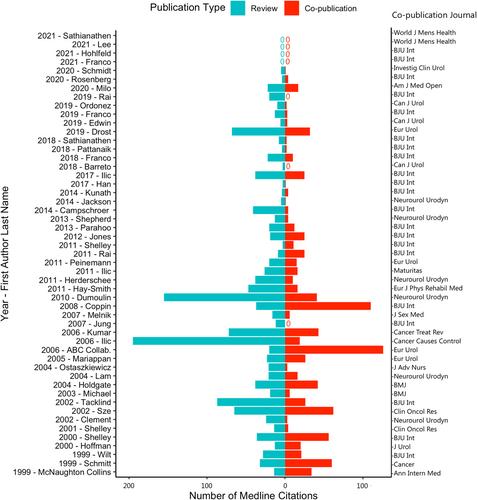Criteria adherence and citation impact of urologic Cochrane review co-publications
Abstract
Introduction
Cochrane systematic reviews are widely recognized as authoritative sources of evidence. To improve dissemination and impact, editorial groups often encourage co-publication of their reviews in other journals. Our study aimed to analyze urology-relevant co-publications and determine their adherence to Cochrane's four co-publication criteria and impact using citation analysis
Methods
We systematically identified all Cochrane reviews published by the Urology, Incontinence, Renal, and Transplantation Groups from 1998 to 2021 as well as subsequent co-publications using MEDLINE, Web of Science, Scopus, and Google Scholar databases. We also determined adherence to Cochrane's four co-publication criteria and analyzed citation rates.
Results
Of the 202 Cochrane reviews included, 52 (25.7%) had an associated co-publication. The majority of the co-publications corresponded to the Urology Group (39; 76.9%), followed by the Incontinence (9; 17.3%) and Kidney and Transplant Group (3; 5.8%). Only 21 (40.0%) co-publications met all four co-publication criteria, with the most common criteria not satisfied was inclusion of the word “Cochrane” in the co-publication title (50% adherence). The proportion adhering to a subset of criteria significantly increased for reviews published between 2013 and 2021 compared to those from 1998 to 2012. Compared to corresponding Cochrane reviews, there was no significant difference in the number of citations of co-publications across all sampled databases, although co-publication citations were usually less than those of original reviews.
Conclusion
Approximately one in four urology-related Cochrane reviews are co-published. Though co-publications garnered a considerable number of citations that could help in the dissemination of Cochrane reviews, many are not readily identifiable as such.


 求助内容:
求助内容: 应助结果提醒方式:
应助结果提醒方式:


